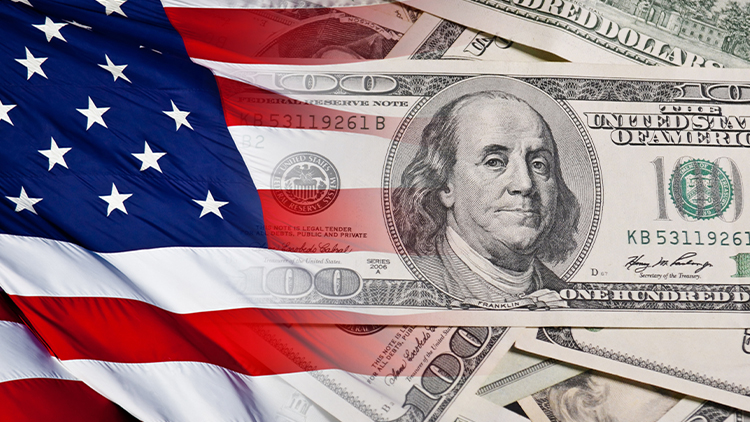
 27 February، 2025
27 February، 2025
 ابحاث السوق
ابحاث السوق
 Views
: 215
Views
: 215

The US gross domestic product rose in the fourth quarter of last year ending in December 2024 in the second reading according to the report of the Bureau of Economic Analysis issued a short while ago to 3.2% compared to 3.1% in the third quarter, to come with the same initial reading without change and in line with expectations.
The increase in GDP growth in the fourth quarter primarily reflected increases in consumer spending and government spending, which were partially offset by a decrease in investment. In a related context, initial weekly unemployment claims rose last week ending February 22 to 242 thousand, an increase of 22 thousand requests, while expectations indicated an increase to 222 thousand.
US durable goods orders rose in January, according to data released a short while ago by the US Census Bureau, by 3.1% in January, or $8.7 billion, to $286.0 billion, compared to a decline of about 1.8% in the revised December reading, better than expectations of a rise of about 2%.
In contrast, core orders excluding transportation orders remained unchanged in January at 0.00%, compared to 0.1% in the revised December reading, better than expectations of a growth of 0.2%. In detail, new orders excluding defense rose by 3.5%.
Markets are awaiting the Federal Reserve’s preferred inflation gauge, the Consumer Spending Index (PCE), during tomorrow’s session, Friday, as expectations indicate that the index will stabilize in January at 0.2% on a monthly basis and at 2.8% on an annual basis. Markets will monitor these figures due to their importance and impact on the Federal Reserve’s monetary policy in the coming period, as expectations indicate that the Federal Reserve will cut interest rates twice this year so far, but expectations may change if inflation returns to rise or fall strongly.
The US dollar index rises by about 0.30% and is trading at 106.80 levels after these positive figures, while the yellow metal is trading at its lowest levels in eight sessions at $2,887 per ounce, down by more than 0.70%